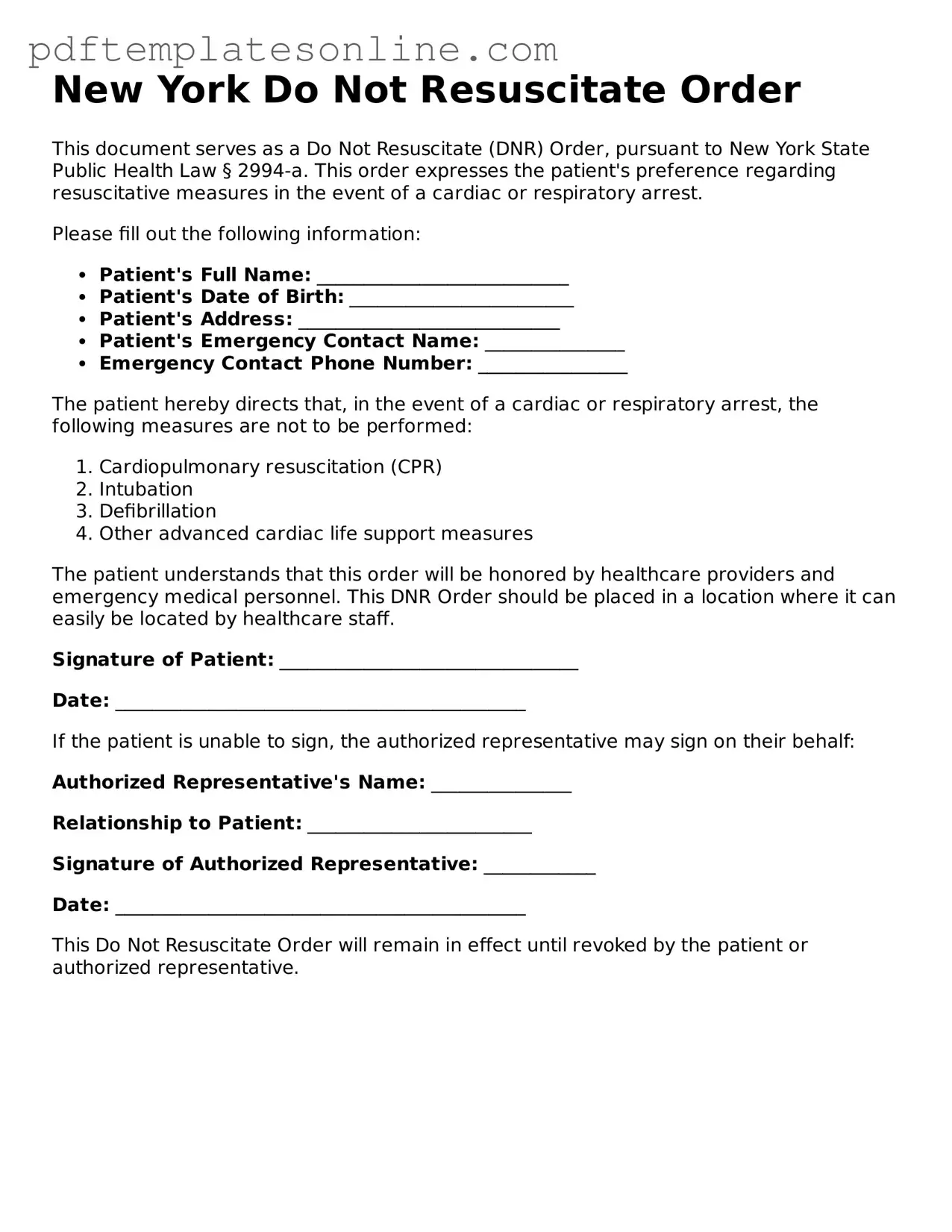Filling out a Do Not Resuscitate (DNR) Order form in New York is a significant step in ensuring your healthcare wishes are honored. However, many people make mistakes that can lead to confusion or even unwanted medical interventions. Understanding these common pitfalls can help you navigate the process more effectively.
One common mistake is not discussing your wishes with family members. While the DNR form is a legal document, it’s also important to have open conversations with your loved ones. This helps ensure everyone understands your wishes and can advocate for you if needed. Without this dialogue, family members may feel uncertain or conflicted about the decisions they need to make on your behalf.
Another frequent error is failing to sign the form correctly. A DNR order must be signed by you and, in some cases, a physician. If the signatures are missing or improperly executed, the document may not be valid. Always double-check that all required signatures are present and legible.
People often overlook the importance of specifying the details of the DNR order. Simply stating that you do not want resuscitation isn’t enough. It’s crucial to clarify the circumstances under which the DNR should be enacted. This ensures that healthcare providers fully understand your intentions and can act accordingly.
Many individuals also neglect to keep the DNR form accessible. It should be readily available in your medical records and with your family members. If the form is stored away in a drawer or not included in your medical file, it may not be honored when the time comes. Consider carrying a copy with you, especially if you have a serious medical condition.
Another mistake is failing to update the DNR order when circumstances change. Life is unpredictable, and your healthcare preferences may evolve over time. If you have a change in health status or a shift in your wishes, be sure to revise the DNR form accordingly. Keeping it current is essential for ensuring that your directives are respected.
Lastly, some people forget to discuss their DNR wishes with their healthcare provider. It’s vital to communicate your preferences to your doctor, who can help ensure that your DNR order is properly documented and integrated into your overall care plan. This collaboration can prevent misunderstandings and provide peace of mind for both you and your family.
By being aware of these common mistakes, you can take proactive steps to ensure your DNR order accurately reflects your wishes. Having clear communication, proper documentation, and regular updates will help safeguard your healthcare preferences and provide reassurance to your loved ones.
